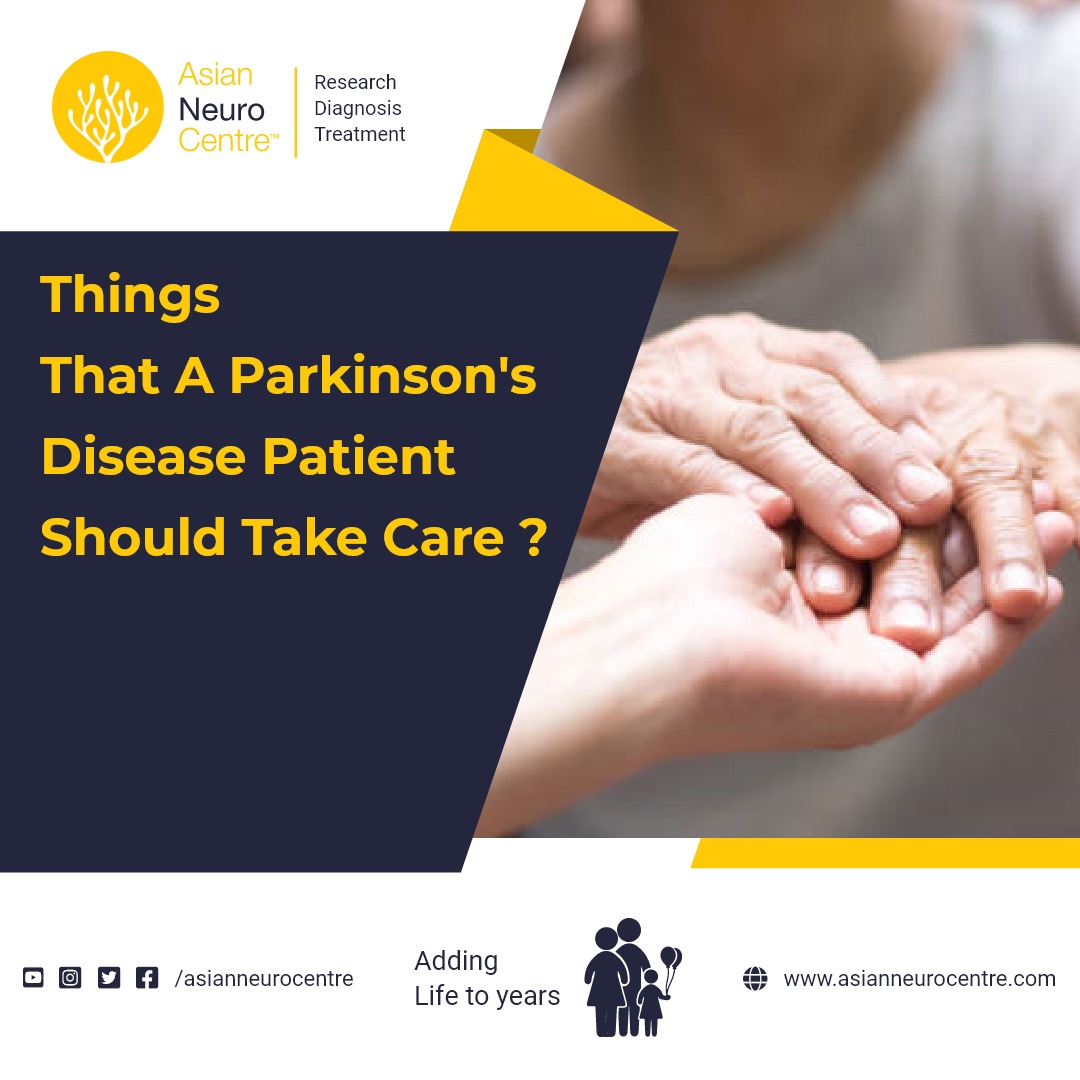- Have any questions?
- 911 12345 29
- info@asianneurocentre.com
Things that A Parkinson’s Disease Patient Should Take Care of ?

Neurological Problems in COVID 19 patient
May 19, 2021
“Now I Feel Like A Free Bird” Diagnosis and Treatment of Benign Paroxysmal Positional Vertigo Of A Male Professor in Asian Neuro Center
May 26, 2021Parkinson’s disease (PD), or simply Parkinson’s, is a long-term degenerative disorder of the central nervous system that mainly affects the motor system. The symptoms usually emerge slowly, and as the disease worsens, nonmotor symptoms become more common. The most obvious early symptoms are tremor, rigidity, slowness of movement, and difficulty with walking. Cognitive and behavioral problems may also occur with depression, anxiety, and apathy occurring in many people with PD
About 50% more men than women get Parkinson’s disease. It is most commonly seen in persons 60 years of age and older. However, up to 10% of patients are diagnosed before age 50.
Signs and symptoms
The most recognizable symptoms in PD are movement (“motor”) related. Nonmotor symptoms, which include autonomic dysfunction, neuropsychiatric problems (mood, cognition, behavior or thought alterations), sensory (especially altered sense of smell), and sleep difficulties, are also common.
Motor
Four motor symptoms are considered as cardinal signs in PD: tremor, slowness of movement (bradykinesia), rigidity, and postural instability.
Neuropsychiatric
PD can cause neuropsychiatric disturbances, which can range from mild to severe. This includes disorders of cognition, mood, behavior, and thought.
Psychosis
Psychosis can be considered a symptom with a prevalence at its widest range from 26 to 83%. Hallucinations or delusions occur in about 50% of people with PD over the course of the illness and may herald the emergence of dementia.
Behavior and mood
Behavior and mood alterations are more common in PD without cognitive impairment than in the general population and are usually present in PD with dementia. The most frequent mood difficulties are depression, apathy, and anxiety.
Unsteady walk and balance and coordination problems
You may develop a forward lean that makes you more likely to fall when bumped. You may take short shuffling steps, have difficulty starting to walk, and difficulty stopping and not swing your arms naturally as you walk. You may feel like your feet are stuck to the floor when trying to take a step.
Muscle twisting, spasms, or cramps.
You may experience a painful cramp in your foot or curled and clenched toes. Dystonia can occur in other body parts.
Stooped posture.
You have a “hunched over” posture.

Read More: Parkinson’s disease Causes, Symptoms and Treatment; Dr Navin Tiwari
Parkinson disease patient should take care of what things
Do Exercise:
Exercise helps improve muscle strength, balance, coordination, flexibility, and tremor. It is also strongly believed to improve memory, thinking and reduce the risk of falls and decrease anxiety and depression.
Eat a healthy, balanced diet:
This is not only good for your general health but can ease some of the non-movement-related symptoms of Parkinson’s, such as constipation. Eating foods high in fiber, in particular, can relieve constipation.
Preventing falls and maintaining balance:
Falls are a frequent complication of Parkinson’s. While you can do many things to reduce your risk of falling, the two most important are:
- To work with your doctor to ensure that your treatments — whether medicines or deep brain stimulation — are optimal; and
- To consult with a physical therapist who can assess your walking and balance.
Improve the quality of your sleep:
Quality sleep is the most important part of Parkinson’s. Patient Required 8 hours sleep regularly
Some tips to help me maintain balance?
- Keep at least one hand free at all times.
- Attempt to swing both arms from front to back while walking
- Consciously lift your feet off of the ground when walking.
When trying to navigate turns, use a “U” technique of facing forward and making a wide turn, rather than pivoting sharply.
- Do one thing at a time. Don’t try to walk and accomplish another task,
Do not wear rubber or gripping soled shoes–they might “catch” on the floor and cause tripping.
Conclusion
Living with Parkinson’s disease can be a frustrating experience. It’s normal to feel angry, depressed, and anxious. You and your family members might find it helpful to reach out to others who have this disease – to share your knowledge and insights, experiences, and tips for living.
Read More: TIPS FOR TAKING DRUGS FOR PARKINSON DISEASE.

